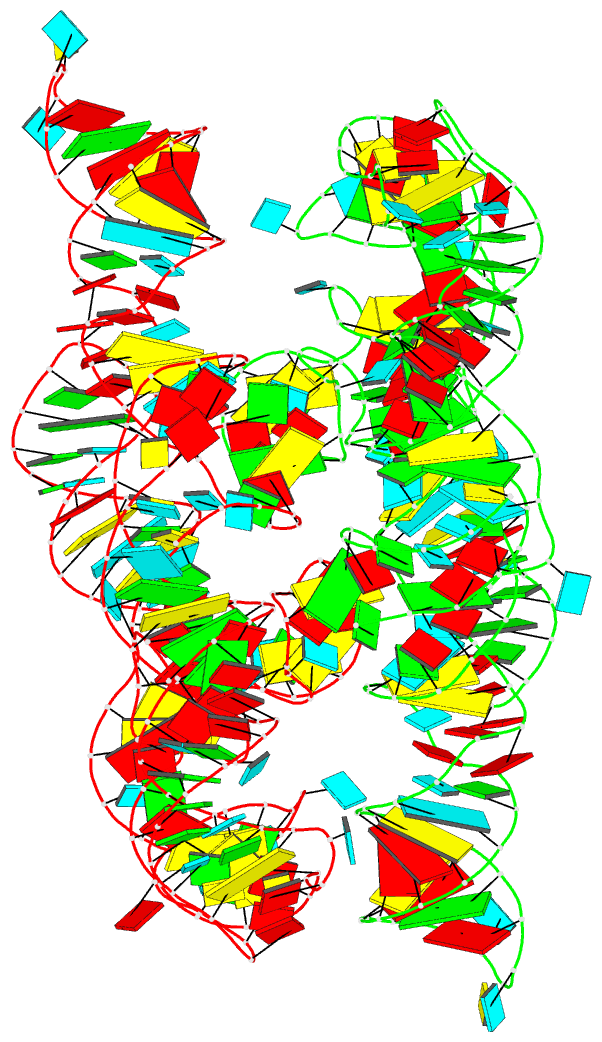Summary information and primary citation
- PDB-id
- 1hr2; DSSR-derived features in text and JSON formats
- Class
- RNA
- Method
- X-ray (2.25 Å)
- Summary
- Crystal structure analysis of a mutant p4-p6 domain (delc209) of tetrahymena themophila group i intron.
- Reference
- Juneau K, Podell E, Harrington DJ, Cech TR (2001): "Structural basis of the enhanced stability of a mutant ribozyme domain and a detailed view of RNA--solvent interactions." Structure, 9, 221-231. doi: 10.1016/S0969-2126(01)00579-2.
- Abstract
- Background: The structure of P4-P6, a 160 nucleotide domain of the self-splicing Tetrahymena thermophila intron, was solved previously. Mutants of the P4-P6 RNA that form a more stable tertiary structure in solution were recently isolated by successive rounds of in vitro selection and amplification.
Results: We show that a single-site mutant (Delta C209) possessing greater tertiary stability than wild-type P4-P6 also crystallizes much more rapidly and under a wider variety of conditions. The crystal structure provides a satisfying explanation for the increased stability of the mutant; the deletion of C209 allows the adjacent bulged adenine to enter the P4 helix and form an A-G base pair, presumably attenuating the conformational flexibility of the helix. The structure of another mutant (Delta A210) was also solved and supports this interpretation. The crystals of Delta C209 diffract to a higher resolution limit than those of wild-type RNA (2.25 A versus 2.8 A), allowing assignment of innersphere and outersphere coordination contacts for 27 magnesium ions. Structural analysis reveals an intricate solvent scaffold with a preponderance of ordered water molecules on the inside rather than the surface of the folded RNA domain.
Conclusions: In vitro evolution facilitated the identification of a highly stable, structurally homogeneous mutant RNA that was readily crystallizable. Analysis of the structure suggests that improving RNA secondary structure can stabilize tertiary structure and perhaps promote crystallization. In addition, the higher resolution model provides new details of metal ion-RNA interactions and identifies a core of ordered water molecules that may be integral to RNA tertiary structure formation.





